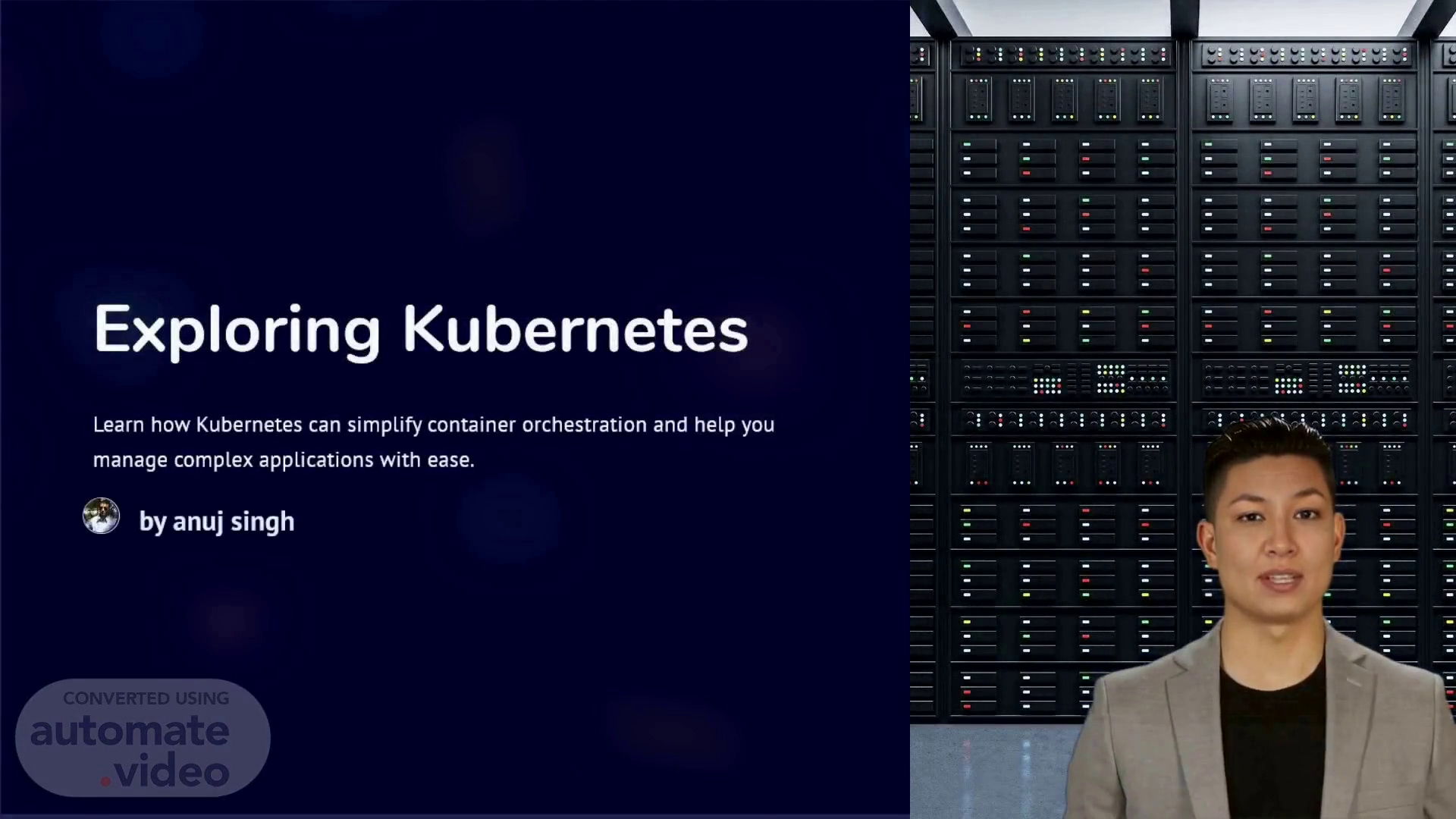Scene 1 (0s)
[Virtual Presenter] Welcome everyone! Today, I am going to discuss the features and benefits of Kubernetes and how it can be used to manage complex applications. I invite you to join me on this journey to explore the world of Kubernetes. So, let's get started!.
Scene 2 (18s)
[Audio] Kubernetes is an open-source platform designed to facilitate the automatic deployment, scaling and management of applications stored within containers such as Docker. We will delve into the manner in which Kubernetes simplifies the orchestration of containers and making it simpler to manage complex applications. Additionally, we will observe the major components of Kubernetes and how they interact to promote the use of containers as well as the surefire advantages that Kubernetes presents..
Scene 3 (48s)
[Audio] Kubernetes is a powerful technology for managing complex applications and simplifying container orchestration. It is composed of two parts: master and node components. The master components include the Kube-apiserver, ETCD, Kube-scheduler and Kube-controller-manager. The node components consist of Kubelet, Kube-proxy and Container Runtime. They all collaborate to generate a scalable and robust platform for handling applications. Let us now examine each component and its role in this process..
Scene 4 (1m 27s)
[Audio] Kubernetes is a powerful tool that can simplify orchestration of containers and make managing complex applications much easier. In this lesson, we'll take a look at how Kubernetes can be used to deploy applications. We'll start with Rolling Updates and learn how Kubernetes can rollout updates to applications without downtime. We'll also explore Blue-Green Deployment and other deployment strategies to get the most out of Kubernetes. By the end of this lesson, you will have a better understanding of how to use Kubernetes for effective application deployment..
Scene 5 (2m 4s)
[Audio] Kubernetes is a tool created to make container orchestration easier. It has great scalability and self-healing abilities to make sure applications have enough resources to work as desired. This slide explains how Kubernetes can help with horizontal and vertical scaling, as well as self-healing. Horizontal scaling is about increasing the amount of instances of an application running on multiple machines, and vertical scaling is adding resources to an existing instance. Kubernetes also provides self-healing with features like automatic container restarts and replication. Knowing how to use Kubernetes can give you the possibility to scale and self-heal applications so they work always as good as possible..
Scene 6 (2m 50s)
[Audio] We are taking an in-depth look at Kubernetes – a container orchestration tool used to help manage complex applications. It provides service discovery, load balancing, and efficient resource utilization. Service discovery allows applications to stay aware of one another for efficient communication. Load balancing helps optimize performance and resource utilization, leading to improved reliability and scalability. Overall, Kubernetes is a powerful tool that simplifies container orchestration and ensures applications run smoothly..
Scene 7 (3m 28s)
[Audio] Kubernetes is a great way to deploy and manage applications and services. In this slide, we'll take a look at using Kubernetes for logging and metrics monitoring to monitor and debug applications. For logging, Kubernetes can be used to aggregate logs from multiple pods and containers, which makes it easy to detect issues. For metrics monitoring, Kubernetes also allows you to monitor application and infrastructure metrics in real-time, helping to keep track of performance. All in all, Kubernetes is a great tool to help monitor and troubleshoot applications and infrastructure, and its real-time metrics monitoring helps to identify and solve any issues quickly..
Scene 8 (4m 11s)
[Audio] Kubernetes is an open source platform that streamlines the deployment, scaling, and management of containerized applications. It allows us to manage our complex applications with ease. In this presentation, we covered Kubernetes security and best practices. We discussed the ways to secure your cluster from unauthorized access through authentication, authorization and network policies. We also explored best practices for managing secrets, configuring RBAC and securing your deployment pipelines. Finally, we went over some additional security considerations. We hope you found this presentation insightful and informative. Thanks for listening..
